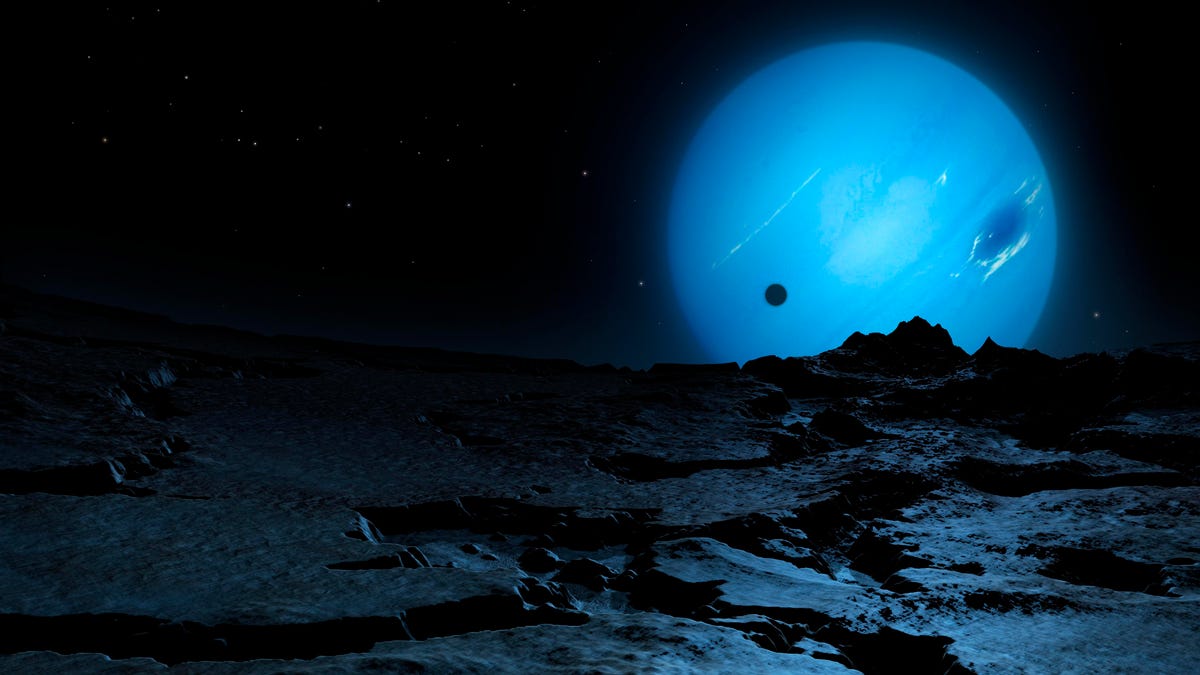Neptune seems to be the answer to all the nagging questions about the origins of our solar system. And China’s scientists recommend a nuclear-powered Neptune Explorer mission to study the ice giant, its largest moon (Triton), and its other satellites and rings.
Mission 2025: To Track Chinese Hypersonic Weapons, US Is Putting Together Missile Surveillance Satellites; This Is How It Will Work
A paper by the China National Space Agency (CNSA), the Chinese Academy of Sciences (CAS), the China Atomic Energy Authority, the China Academy of Space Technology, and multiple universities and institutes envisions studying everything from its diamond rain; the nature and position of its proto-stellar nebula that birthed our solar system and; oddities about its largest moon Triton that scientists believe was flung from the outer solar system and got pulled into Neptune’s orbit.
Triton is theorized to eventually break up, forming a halo around Neptune or colliding with it.
Unfortunately, due to the difficulties of sending missions to deep space (which includes launch windows, power supply, and communications), only one mission has visited Neptune.
This was NASA’s Voyager 2 probe flyby in 1989 but was limited in the scope of information it gathered owing to the nascence of computer and satellite communication technology back then.
The lead author of the paper, Guobin Yu, from the School of Astronautics at Beihang University and the Department of Science and Technology (DST) at the CNSA, recommends nuclear power to reliably provide electricity and propulsion for no less than fifteen years.
They determined that a Radioisotope Thermoelectric Generator (RTG) with a 10-kilowatt energy (kWe) capacity would suffice. This nuclear battery, similar to what powers the Curiosity and Perseverance rovers, converts the heat from the decay of radioactive material into electricity.
Neptune’s Moon, Atmosphere & Satellites
The spacecraft would also carry several instruments to study the planet, its system, and objects. This includes a Neptune Atmospheric Probe (NAP) for studying the planet’s interior and a Triton Penetration Probe (TPP) that would examine the moon’s crust.
Smaller satellites (CubeSats or nanosatellites) would also be deployed along the way to explore the Main Belt asteroid and a Centaur asteroid.
The NAP would study Neptune’s internal structure and composition, its magnetosphere and ionosphere. Examining Neptune’s interior would also explain why the planet is much smaller than Saturn but has more than twice the mass.
Knowing more about Neptune’s atmospheric composition will also reveal how it differs from Uranus’s atmosphere (similarly blue but lighter).
As for Neptune’s largest moon Triton, the direction of its orbit, opposite to the planet’s rotation, is relied upon to theorize how Triton could be a dwarf planet formed in the Kuiper Belt. Its similar composition to Pluto again lends credence to this theory.
Astronomers say Triton was ejected from the Kuiper Belt and captured by Neptune’s gravity, which broke up Neptune’s existing satellites and formed new, smaller ones.

“Establish a complete list of planetary rings and their inner Shepherd satellites, study the characteristics, formation mechanism, material exchange, and gas transport of planetary rings of different orbital types, analyze the origin of different celestial bodies, and detect possible organic matter…The multiple planetary rings of Neptune are not uniformly distributed in longitude.
Instead, it presents an arc-block-like discrete structure. Why these arc-block structures can exist, and whether they exist stably without spreading out, are all interesting dynamical problems,” the paper said.
Go Where No Man Has Reached Before
China’s space agency has quite literally gone places in recent years. From first reaching the far side of the moon (Chang’e) to having its own Mars rover (Tianwen), its space station (Tiangong), to planning a joint moon base with Russia.
After NASA’s Voyager 1, it would be the first to reach the outer solar system. Voyager 1 was launched in 1977 and, in 44 years, drifted to reach the heliosphere. Not an achievement in itself but a natural consequence of a spacecraft that was not meant to return to earth, the journey was fascinating as it was terrifying.
In a few years, Voyager crossed the ‘oort cloud’ and exited the solar system, reaching the farthest man has ever gone.
The next solar system is Alpha Centauri. The chances of it heading right into its path are slim. Even if it does, it will take 6,000 years at drift speed to make it there.
Humans will have by then expected to have entered the Type II civilization scale, the measure of a sentient civilization’s advancement proposed by Russian astronomer Nikolai Kardashev in 1964.
A Type I civilization has harvested all the energy of its home planet, while Type II has colonized its solar system due to its raw hunger for resources. Type III naturally is a galactic civilization, controlling planets and stars across hundreds of millions of light years.
The power it commands would be terrifying. But this is also where physics is often dismissed as science fiction, something the late astrophysicist Carl Sagan lamented as not intriguing adults anymore.
Humans are, meanwhile, tens of millions of years away from attaining a Type III scale. But like Voyager, our journey is long, and we have miles to go before we sleep.
- The author can be reached at satamp@gmail.com
- Follow EurAsian Times on Google News




